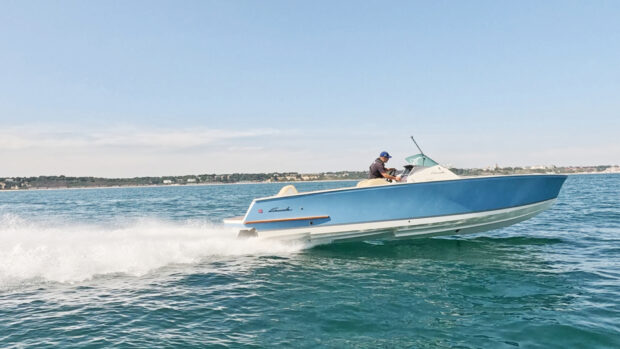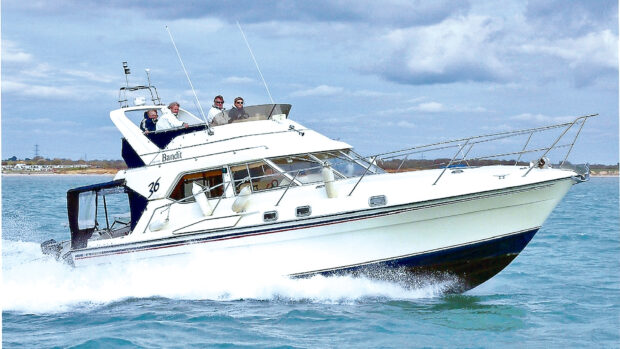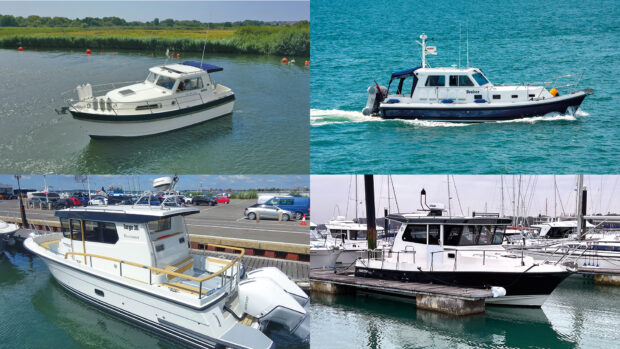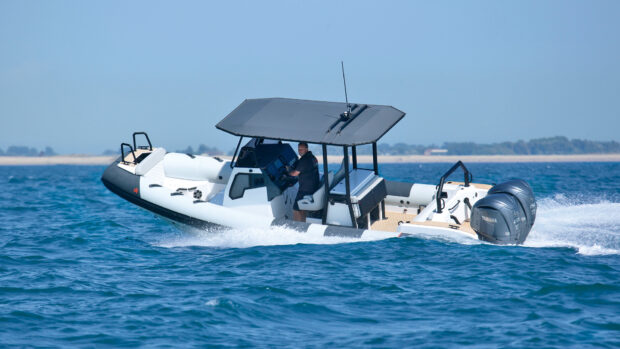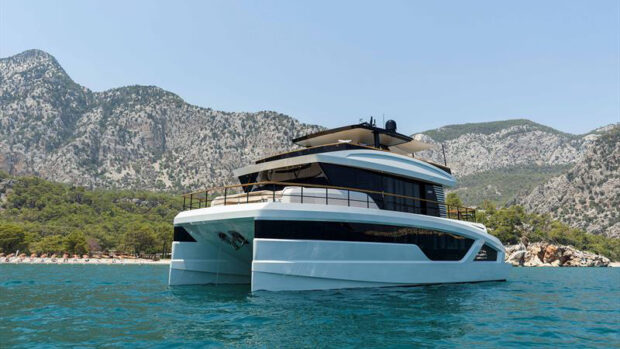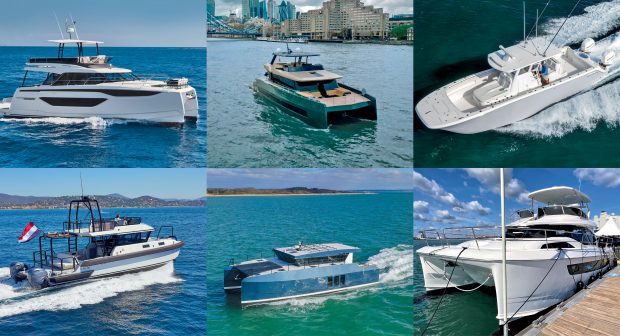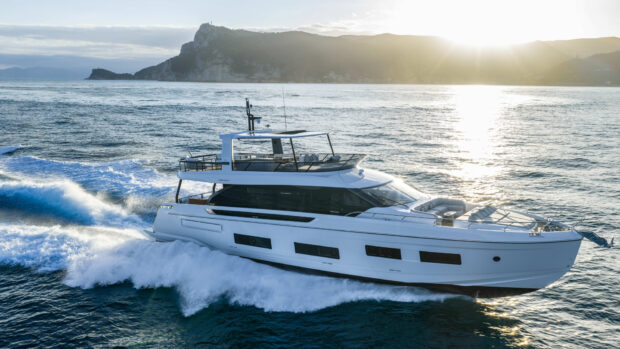A safety line or tether is one of those items you often see in the chandlers but rarely on a motor boat.
Sailors use them a lot, clipping on when it’s windy or at night when the consequences of falling overboard are that much more serious.
However, a recent Man overboard (MOB) training session with a life-sized dummy highlighted to me just how useful they can be on a motor boat as well.
Not only was the dummy very heavy but it was also unable to assist in any way – just like an unconscious MOB.
This really highlighted how hard it was to lift the MOB back onto the boat using my one free hand – my other hand was busy hanging onto the boat. Being safely attached to the boat with a lifeline allowed me to use both hands to help the MOB.
I could also use it to attach the MOB to the boat while I worked out how to lift them. For the exercise, I was using a standard tether with a clip at both ends.
These come in various lengths but you can also get elasticated ones with one, two or even three clips.
This enables you to attach one of the extra clips to the next point on the boat before removing the previous one so you’re always tethered when moving around.
That could be useful if, for example, you needed to venture onto the foredeck to sort out a loose anchor on a rough day.
There is always a clip attachment at one end of the tether to attach it to the boat but the person end can be either another clip or a loop that you thread back on itself. This does create an additional problem if you need to un-tether in a hurry.
Article continues below…
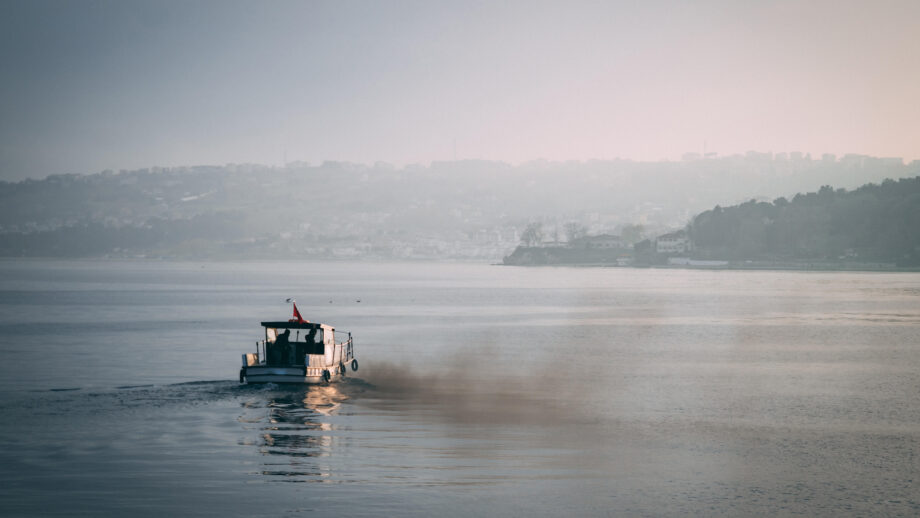
How to Check Your Boat Engine Cooling System

How to plan a safe passage at sea: An expert guide
This is one of the reasons why I always carry a sharp knife on my person when at sea so I can quickly cut through anything under load.
Try a tether out before buying – check that you can operate the clips one-handed, some are quite heavy and stiff. You also need to consider how to attach the tether to yourself.
One option is to buy a lifeline harness but I prefer to wear a lifejacket that has a designated clip-on point. This can either be a metal ring or a reinforced fabric loop. I prefer the fabric ones as it can’t scratch the boat.
You also need to consider what part of the boat you are going to clip yourself to. Sailing boats often have dedicated safety lines running along the deck but motor boats rarely do. Ideally, look for something inboard that will prevent you falling overboard but do check that it is through-bolted.
Cleats and side deck guardrails won’t stop you falling overboard but will at least keep you attached to the boat.
Choose with care and talk through what you have chosen, and why, with your crew.
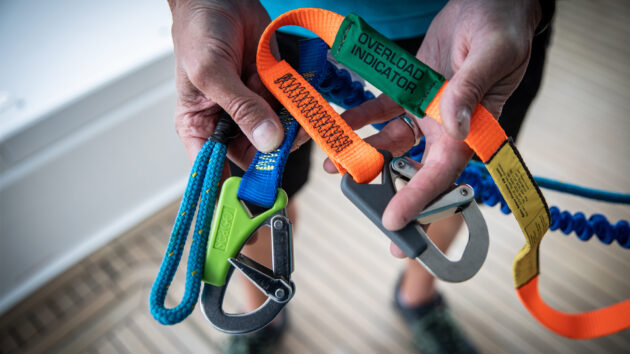
Tether options
There are three main styles of tether attachments: a fixed length of rope with a loop at one end and a clip at the other (left); an elasticated cord with a one-handed clip (middle); and a fixed-length strop with an overload strain indicator (right).
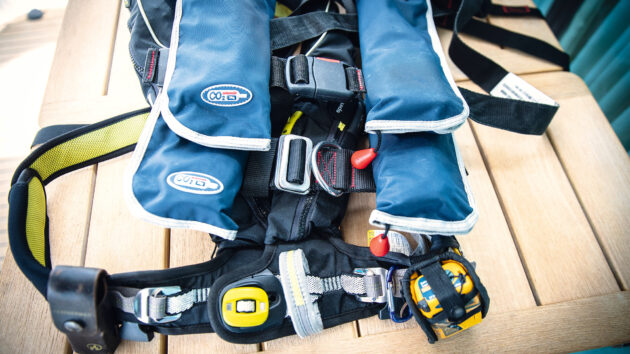
Harness options
There are also three types of lifejacket clip point.
No strong point provided so the tether has to be clipped around the straps (top).
Metal D-ring (middle) – this is strong but can damage the boat.
Reinforced fabric loop (bottom) is strong but soft and comfortable to wear.
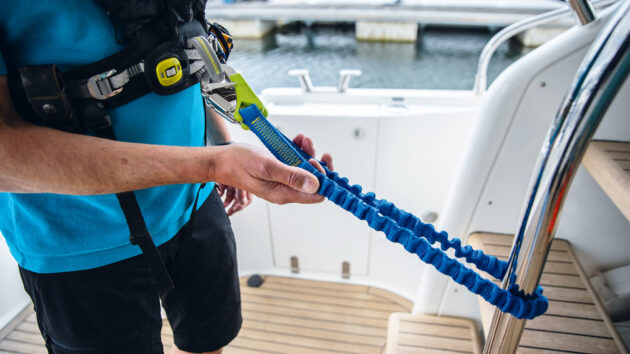
Tether length
A tether can be shortened by doubling it back on itself.
The clips shown above are designed to be released one-handed but you need fairly strong hands so check you can open it one-handed before buying. one.
Emergency knife
When using a tether, always have a means to cut yourself free.
I carry the yellow knife clipped onto my lifejacket.
Some lifejackets also have a built-in hook knife, like this green one, to cut a tether.
Outboard clip point
Here I have attached myself to the guardrails.
This isn’t ideal as I could still fall overboard but by doubling the line it has reduced the length of the fall so I would be suspended in the air.
Inboard clip point
This inboard deck fitting is a better solution as it’s through-bolted for strength and allows me to use both hands, safe in the knowledge that the tether will prevent me from falling overboard.
 If you enjoyed this….
If you enjoyed this….
Motor Boat & Yachting is the world’s leading magazine for Motoryacht enthusiasts. Every month we have inspirational adventures and practical features to help you realise your sailing dreams, as well as tests and news of all the latest motorboats.
Plus you’ll get our quarterly Custom Yachting supplement where we share the last on offer in the superyacht world and at the luxury end of the market.
Build your knowledge with a subscription delivered to your door. See our latest offers and save at least 30% off the cover price.
Note: We may earn a commission when you buy through links on our site, at no extra cost to you. This doesn’t affect our editorial independence.



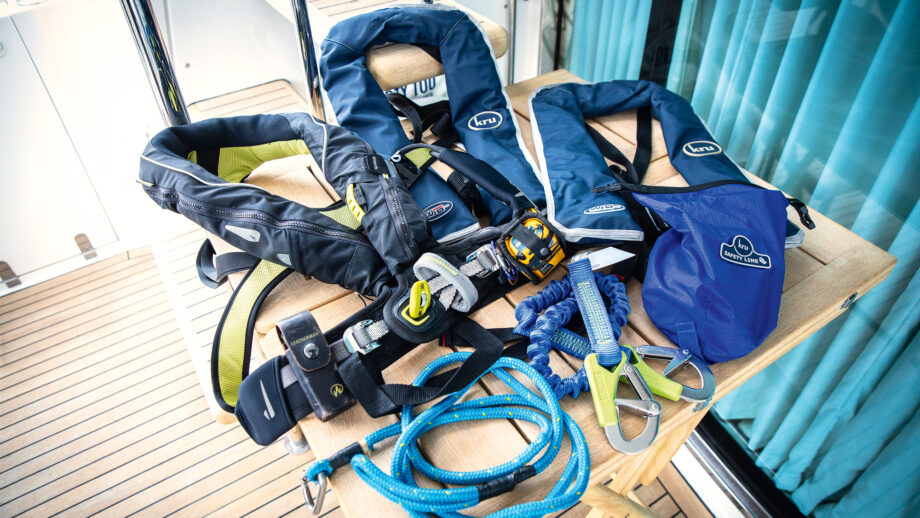
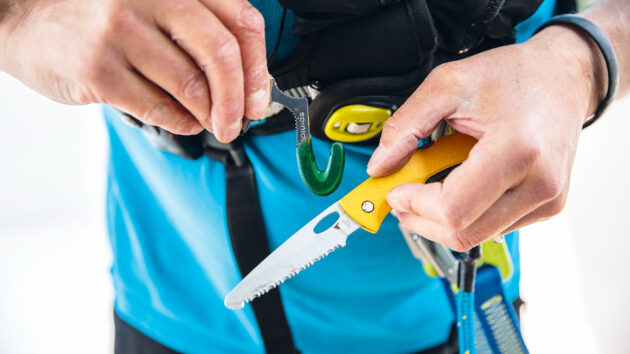
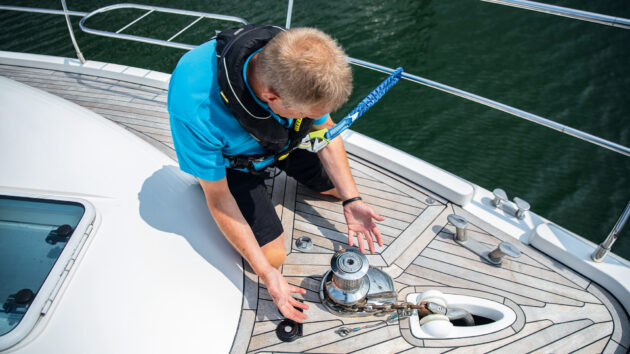
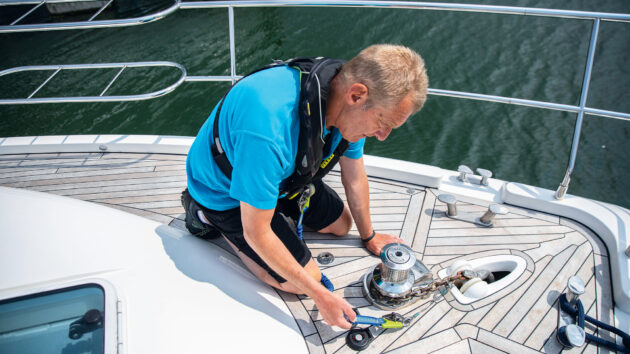
 If you enjoyed this….
If you enjoyed this….